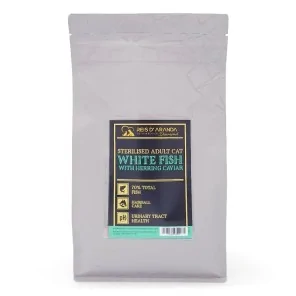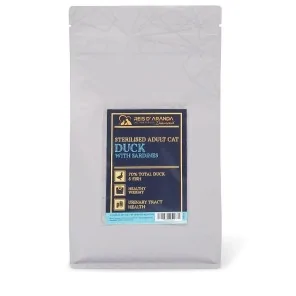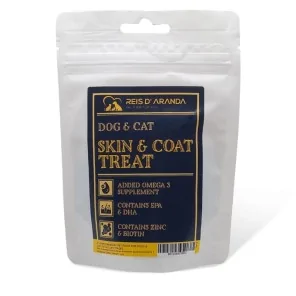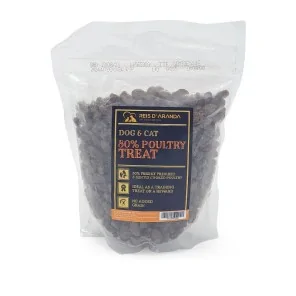Its name says it all: the Vienna blue rabbit comes from Austria. Not only is it beautiful with its shiny blue-grey...
THE CAT DEVON REX
INTRODUCTION
Some say they look like fairies, some say they look like Kate Moss, some say they look like Yoda from Star Wars. These cats have a most unusual appearance. Meet devon rex: a mischievous, playful cat with a rather unusual hairstyle.
THE ORIGIN OF THE DEVON REX CAT
Like its cousin, the Cornish rex, the devon rex originated in England. Its progenitor is a cat known as Kirlee, a wavy-coated feline born in Devonshire in 1960. Her mother was a cat owned by a woman named Beryl Box, and her father was a stray cat with the same curly coat. Kirlee shared the same genetic make-up as the Cornish Rex, who was born a decade earlier in nearby Cornwall. The various mating tests showed that Kirlee was the result of a natural genetic mutation and could be considered a breed in its own right. At that time, Mrs. Cox contacted the first Cornish Rex breeder, Mrs. Sterling Webb. Kirlee was crossed with a descendant of a male Cornish Rex cat. The result was awaited with great expectation. However, nature does not always turn out as humans expect. And that is what happened in this case: all the offspring of the litter had straight fur! This showed that the Kirlee cat must have a different genotype. It was a new type of rex cat and became known as gene 2, which corresponded to the devon rex cat, while gene 1 is that of the cornish rex. This gene, which is responsible for the curl, is recessively inherited.
This means that the gene is always passed on by one of the curly parents, but the kittens only have curls when both parents also have curls. Therefore, from a cross between a Kirlee cat and a straight-haired cat no curly-haired kittens were born.
The devon rex was recognised by the Governing Council of the Cat Fancy (GCCF) in 1967, by the Féderation Internationale Féline (FiFe) in 1968 and by the Cat Fanciers Association (CFA) in 1979.
WHAT IS THE DEVON REX CAT LIKE?
Cats of the devon rex breed have a slender body with a fragile appearance, slender, long limbs and an arched back. These characteristics of the devon rex make them look really regal and elegant. They are also medium-sized, weighing between 2.5 and 4 kg, although most specimens weigh around 3 kg.
The head of the devon rex is small and triangular, with huge almond-shaped eyes of vivid and intense colours, which give them a very expressive look, and triangular ears that are equally disproportionate to the size of their face. At first glance, as we said, the devon rex may seem very similar to the cornish rex, however, on closer inspection we can see that the devon are thinner and more stylised cats and have distinct facial features.
The coat of these felines is short and curly or wavy, extremely soft and silky to the touch. In terms of colour, all shades and patterns in their coat are acceptable.
THE HEALTH OF THE DEVON REX CAT
The devon rex is generally a healthy breed, but may suffer from some hereditary diseases. One of these is known as hypotrichosis or hereditary baldness. The breed may also be at high risk for the heart disease known as hypertrophic cardiomyopathy (HCM) and a muscle disease called devon rex myopathy. Myopathy becomes noticeable during the first year of a cat's life and causes muscle weakness and fatigue. Hip dysplasia, a malformation of the hip socket that weakens the hip joint, has been reported, as well as polycystic kidney disease (PKD) and patellar luxation, which causes the kneecap to dislocate from time to time. The devon may also suffer from Malassezia dermatitis, a single-celled fungus that causes oily skin and infected, itchy ears, but can be cured with antifungal treatments and topical shampoos.
The devon rex does not require complicated care, as it does not shed much and dries quickly after bathing. They do shed, but the coat structure is less obtrusive than that of other breeds. Some cats have matted curls and others have a fine, soft coat. The coat is thicker on the back and sides.
When brushing should be done with care as the coat is delicate and can be damaged by forceful brushing. Some may have oily skin in the folds or on the claws. In these cases, bathing every two weeks is a good solution.
The devon rex loves warmth, much more than its normal furred companions. For this reason, it prefers warm, sheltered surroundings to being cold outdoors. He always goes to the warmest spots he can find and prefers to sleep with a blanket on his bed. But he should be protected from direct sunlight, as he burns easily.
THE PERSONALITY OF THE DEVON REX CAT
The devon rex is a very intelligent and social cat. He is very interested in everything that is going on around him and loves to sit or lie on the head or shoulder of his favourite person. He is affectionate and is sure to come very close to you if you communicate in a soft and calm voice.
He is a playful and outgoing cat, and gets along well with other pets, children and visitors. He refuses to be left out of any activity and, given his intelligence, loves demanding games such as puzzles or interactive toys, playing fetch and learning various tricks. They say he looks like an elf or a fairy, both in appearance and character. So don't be surprised if he is a bit naughty and mischievous, especially if he gets bored. As he is a very social cat, he does not like to be left alone for long periods of time.
CONCLUSION
The devon rex is a very rare breed of cat which differs from other breeds by its external appearance. Its skull shape is flat, with prominent large ears and very large eyes. Although the first reactions to the devon rex cat were rather reserved and even hostile, it later gained a reputation very quickly due to its special physical characteristics. Due to its pleasant qualities the devon rex is a typical family cat which can also be kept as an indoor cat. Maybe soon it will also brighten up your everyday life.
Leave a comment
Log in to post comments
















